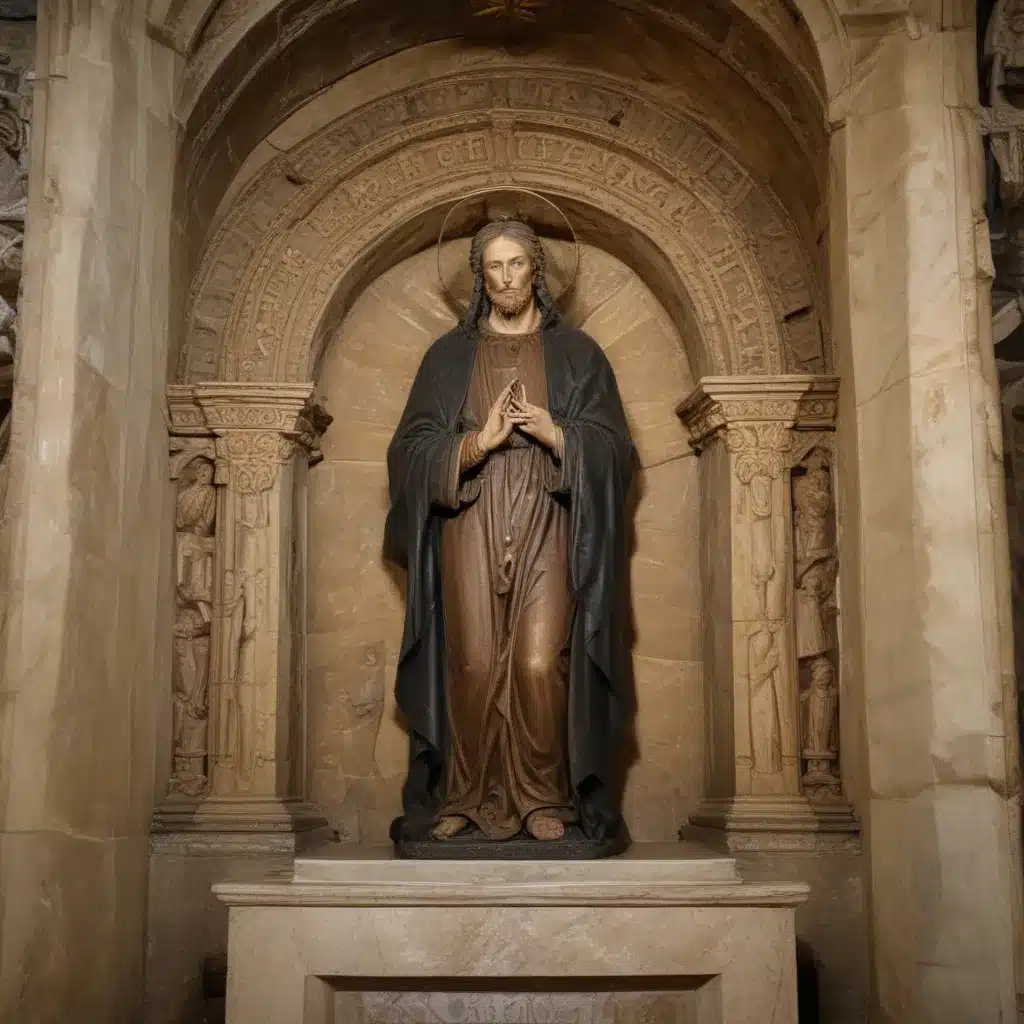
Discovering the Unsung Wonders of Philippine Catholicism
As I step off the bustling streets of Manila and into the serene courtyard of the Archdiocesan Shrine of Our Lady of Guidance, I can’t help but feel a palpable sense of peace wash over me. The ornate, centuries-old facade of the church stands as a testament to the enduring faith of the Filipino people – a faith that has weathered countless storms and shaped the cultural landscape of this remarkable nation.
But this shrine is just one of the many hidden gems that dot the Philippine archipelago, beckoning the curious traveler to uncover the country’s rich Catholic heritage. From remote island sanctuaries to little-known mountain retreats, the Philippines is teeming with obscure pilgrimage sites that offer a unique glimpse into the nation’s deep-rooted spirituality.
Exploring the Enchanting Visayas
As I board the ferry to Cebu, the vibrant heart of the Visayas region, I can’t help but feel a thrill of anticipation. This island is home to the Basilica Minore del Santo Niño, a magnificent church that houses one of the oldest religious relics in the Philippines – a statue of the Holy Child Jesus, believed to have been gifted to Queen Juana by the Spanish explorer Ferdinand Magellan in 1521.
The faithful flock to this site year-round, seeking blessings and miracles from the revered Santo Niño. But what many don’t know is that just a short drive away, nestled in the lush hills of Cebu, lies the unassuming Simala Shrine – a modern-day pilgrimage site that has captured the imagination of devotees across the country.
The Simala Shrine, with its soaring spires and intricate marble carvings, is a testament to the enduring power of faith. Here, the faithful come to pray for intercession, to seek solace in times of trouble, and to revel in the awe-inspiring beauty of this sacred space. As I wander through the serene gardens and gaze up at the towering facade, I can’t help but feel a deep sense of connection to the rich spiritual legacy of this place.
Uncovering the Hidden Gems of Luzon
But the wonders of Philippine Catholicism don’t end in the Visayas. As I journey northward to the island of Luzon, I find myself drawn to the quaint town of Tayabas, nestled in the heart of the Quezon province. Here, the Shrine of Our Lady of Candelaria stands as a beacon of hope and devotion, its ornate facade and intricate interiors a dazzling display of the country’s artistic and architectural heritage.
What sets this shrine apart, however, is the unique devotion to the Virgin Mary that has taken root here. The faithful come to venerate the miraculous image of Our Lady of Candelaria, believed to have been discovered by a local farmer centuries ago. The annual Candelaria Festival, a vibrant celebration of faith and community, draws devotees from all over the Philippines, creating a mesmerizing tapestry of color, music, and reverence.
As I immerse myself in the festivities, I can’t help but marvel at the depth of the Filipino people’s devotion to their faith. It’s a devotion that transcends the boundaries of time and space, connecting generations of believers in a shared spiritual legacy.
Seeking Solace in the Mountains of Mindanao
But the Philippines’ spiritual wonders don’t end on the main islands of Luzon and the Visayas. As I venture further south to the island of Mindanao, I find myself drawn to the majestic Mount Apo, the highest peak in the Philippines. Here, nestled amidst the towering peaks and lush forests, lies the Shrine of the Holy Infant Jesus of Prague, a unique pilgrimage site that offers a respite from the demands of the modern world.
The shrine, with its serene gardens and striking architecture, is a testament to the enduring faith of the Filipino people. Pilgrims come here to seek the intercession of the Holy Infant Jesus, believing in the miraculous power of this revered image to bring healing, protection, and spiritual renewal.
As I kneel in the quiet of the chapel, surrounded by the flickering candles and the gentle murmur of prayers, I can feel the weight of my own burdens start to lift. It’s a moment of profound connection, a reminder that even in the most remote and unassuming places, the Philippines’ spiritual legacy continues to shine.
Embracing the Diversity of Philippine Catholicism
These are just a few of the many obscure Catholic pilgrimage sites that dot the Philippine archipelago, each one offering a unique window into the country’s rich spiritual heritage. From the grand, historic cathedrals of Manila to the humble, tucked-away sanctuaries of the remote provinces, the Philippines is a treasure trove of sacred wonders, waiting to be discovered by the curious traveler.
As I reflect on my journey through these hidden gems, I’m struck by the sheer diversity and depth of Philippine Catholicism. It’s a faith that has been shaped by centuries of cultural exchange, natural disasters, and political upheaval, yet it remains a unifying force that binds the Filipino people together.
Whether you’re seeking spiritual renewal, cultural immersion, or simply a chance to explore the lesser-known corners of this remarkable country, the obscure Catholic pilgrimage sites of the Philippines offer a truly one-of-a-kind experience. So pack your bags, lace up your walking shoes, and get ready to embark on a journey of discovery – one that will leave you forever changed by the enduring power of faith.


